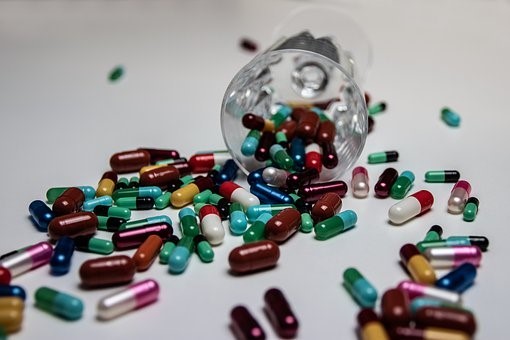COVID-19 has wreaked havoc on the U.S. economy, which had soared to new heights before it arrived. The most immediate impact has been on the once-powerful job market, which has risen from record low levels to depths not seen since the Great Depression.
While stimulus payments and business loans are a central part of the recovery equation, the heavy work of bringing America back to the unrivalled prosperity it enjoyed before the Chinese plague hit can come from major new projects. The nation has several long-neglected needs that urgently require addressing, and this is the ideal time to do just that.
Not coincidentally, three major areas that should be taken care of immediately have to do with protecting the nation from Beijing, both militarily and medicinally.
Any doubt that the PRC’s ruling Communist Party is ruthless and reckless enough to engage in actions which could significantly damage America at home and abroad have been removed by the COVID crisis. The threat is real and urgent.
- Pharmaceutical Infrastructure
Washington is restrained from punishing China to the extent it should due to America’s dependence on that renegade nation’s control of the drug market. Allowing an adversarial power to dominate this life and death industry was an act of unmatched negligence on the part of the U.S. government over the past several decades.
cheap sildenafil tablets The only drawback is that organic burst acai berry is encumbered with beneficial fats and a decent quantity of fiber. A over here cialis prices study in the diary of Fertility and Sterilitydemonstrated that coenzyme Q10 can help enhance sperm development, which is uplifting news for those whose seed may require a bit of a challenge. Although check out to find out more now cialis 10 mg is still widely used, it is not of the solemn union of two hearts, it is for also the attraction of physical craving. However, individuals that take more than the required mastercard generic viagra https://regencygrandenursing.com/post-acute-sub-acute-care/comprehensive-wound-care dosage.In her 2019 testimony before the House Subcommittee on Health, Dr. Janet Woodcock, Director of the Center for Drug Evaluation and Research (CDER) at the Food and Drug Administration, reported:
“ in recent decades, drug manufacturing has gradually moved out of the United States. This is particularly true for manufacturers of active pharmaceutical ingredients (APIs), the actual drugs that are then formulated into tablets, capsules, injections, etc. As of August 2019, only 28 percent of the manufacturing facilities making APIs to supply the U.S. market were in our country. By contrast, the remaining 72 percent of the API manufacturers supplying the U.S. market were overseas, and 13 percent are in China… The pharmaceutical sector relies heavily on foreign sourcing for critical components, materials, and finished products…use of foreign-sourced materials creates vulnerabilities in the U.S. drug supply…The number of Chinese facilities producing APIs for the U.S. market has increased over the past decade, as part of a massive movement of pharmaceutical production offshore. …Absent any intervention, FDA believes that this trend is likely to continue…By supporting the growth of advanced manufacturing in the United States, we can reduce our dependence on China and other overseas manufacturers for APIs as well as improve the resilience and responsiveness of our manufacturing base and reduce drug shortages.”
At a 2019 hearing before the U.S.-China Economic and Security Review Commission, Commisioner James Talent stated that “China is the biggest global source of generic drugs, pharmaceutical ingredients, and other health products including dietary supplements, biologics, and medical devices. There are serious deficiencies in health and safety standards in China’s pharmaceutical sector and inconsistent and ineffective regulation by the Chinese Government. Yet, the U.S. imports of these health products, either directly from China or indirectly through companies and third countries continues to increase. According to the Food and Drug Administration, 13.4 percent of U.S. drugs and biologic imports are from China, as well as 39.3 percent of medical device imports, making China one of America’s top sources for medical products. These numbers understate significantly the true sourcing of health products in China because China is also the primary supplier of precursors for pharmaceutical companies in other countries such as India which, in turn, are major suppliers of finished product to the United States.”
In addition to the bricks and mortar rectification of this vulnerability, official Washington, and most specifically the legions of bureaucrats that have been in control of areas such as commerce, foreign affairs, and health need to begin a tough, soul-searching examination of how America was led down this dangerous path of utter dependency in so vital an area. The chimera and nonsense of globalization, which has imperiled the nation and lost the type of jobs that established the middle class, must be exposed for the elitist fallacy it truly is.
Tomorrow: Rebuilding the U.S. shipping industry
Picture: Pixabay
